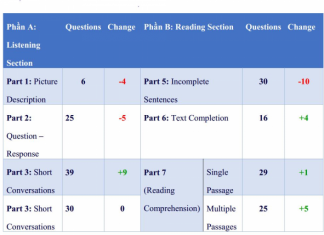Emerging Shifts: A Comprehensive Look at Today’s latest news and the Reshaping of International Affairs.
In an era defined by rapid information flow, staying abreast of the latest news is more critical than ever before. Global events unfold at an unprecedented pace, significantly impacting economies, political landscapes, and individual lives. Understanding these developments requires a nuanced approach, moving beyond headline grabbing summaries to a deeper analysis of the underlying causes and potential consequences. This article delves into the emerging shifts currently reshaping international affairs, examining key areas of concern and offering insights into the complexities of our interconnected world. The ability to critically assess information, discern fact from fiction, and understand the broader context of current events is a vital skill in the 21st century, and this piece aims to contribute to that effort by providing a comprehensive overview of crucial global developments.
Geopolitical Realignment in the Middle East
The Middle East continues to be a region of significant geopolitical tension, witnessing a complex interplay of regional powers, external actors, and internal conflicts. Recent diplomatic shifts, particularly the normalization of relations between Israel and several Arab states, are fundamentally altering the regional power balance. This has ripple effects far beyond the immediate participants, influencing global energy markets, counter-terrorism efforts, and the broader dynamics of international diplomacy. The role of Iran remains a central point of contention, with its nuclear program and support for proxy groups fueling ongoing instability. The conflict in Yemen, though often overshadowed by other events, persists as a humanitarian catastrophe with far-reaching implications.
The economic factors underpinning the geopolitical landscape are equally crucial. Fluctuations in oil prices, the development of alternative energy sources, and the increasing importance of natural gas pipelines all contribute to the shifting allegiances and strategic priorities of nations in the region. Competition for resources and investment is fierce, driving further instability and exacerbating existing tensions. Moreover, the rise of non-state actors, such as ISIS and other extremist groups, adds another layer of complexity to an already volatile situation. Understanding these interconnected factors is essential for comprehending the challenges and opportunities facing the Middle East today.
The involvement of external powers, including the United States, Russia, and China, further complicates the situation. Each nation pursues its own strategic interests, often with conflicting agendas. The United States has historically played a dominant role in the region, but its influence is waning as other powers seek to expand their footprints. Russia has increased its involvement in recent years, particularly in Syria, while China is expanding its economic and diplomatic ties with countries across the Middle East. The competition between these major powers has significant implications for the future of the region and the broader international order.
| Country | Key Interests | Level of Involvement |
|---|---|---|
| United States | Energy Security, Counter-Terrorism, Supporting Allies | High |
| Russia | Expanding Influence, Military Partnerships, Energy Deals | Increasing |
| China | Economic Partnerships, Resource Acquisition, Diplomatic Ties | Growing |
The Rise of Digital Authoritarianism
While the internet was initially hailed as a tool for democratization and freedom of expression, a disturbing trend of digital authoritarianism is gaining momentum globally. Governments are increasingly employing sophisticated technologies to monitor, censor, and control their citizens’ online activities. This includes the use of surveillance software, social media manipulation, and the suppression of dissent through online platforms. The erosion of online privacy and the increasing vulnerability to cyberattacks pose a significant threat to fundamental human rights and democratic values. This isn’t limited to traditionally authoritarian regimes; even established democracies are grappling with the challenge of balancing security concerns with the preservation of civil liberties in the digital realm.
The deployment of artificial intelligence (AI) in surveillance systems is particularly concerning. Facial recognition technology, combined with data analytics, allows governments to track individuals’ movements, monitor their communications, and identify potential political threats. These capabilities are increasingly being used to suppress protests, silence critics, and maintain social control. Moreover, the spread of disinformation and propaganda through social media platforms, often facilitated by state-sponsored actors, further undermines public trust and polarizes societies. Combating these challenges requires a multi-faceted approach, including strengthening cybersecurity measures, promoting media literacy, and advocating for stronger legal frameworks to protect online privacy.
The implications of digital authoritarianism extend beyond national borders. The increasing interconnectedness of the digital world means that governments can easily monitor and influence online activities in other countries. This poses a threat to international cooperation and the stability of the global information ecosystem. The vulnerability of critical infrastructure to cyberattacks is also a growing concern, as state-sponsored hackers target essential services such as energy grids, financial systems, and healthcare facilities. Protecting democratic values and promoting a free and open internet requires a concerted effort from governments, civil society organizations, and technology companies.
- Increased surveillance of citizens’ online activities.
- Censorship of information and suppression of dissent.
- Use of AI and facial recognition technology for social control.
- Spread of disinformation and propaganda through social media.
- Cyberattacks on critical infrastructure.
The Accelerating Climate Crisis and its Global Impact
The scientific evidence for climate change is overwhelming, and its impacts are already being felt around the world. Rising global temperatures, extreme weather events, and sea-level rise are causing widespread devastation and displacement, threatening the livelihoods of millions of people. The consequences of inaction are catastrophic, with the potential for irreversible damage to ecosystems and the global economy. Addressing the climate crisis requires a concerted global effort to reduce greenhouse gas emissions, transition to renewable energy sources, and build resilience to the impacts of climate change. This is not simply an environmental issue; it is a fundamental challenge to global security and stability.
The economic costs of climate change are staggering. Extreme weather events, such as hurricanes, floods, and droughts, cause billions of dollars in damage each year. Agricultural productivity is declining in many regions, leading to food shortages and rising prices. Sea-level rise threatens coastal communities and infrastructure. Moreover, the displacement of climate refugees is creating new social and political tensions. Investing in climate mitigation and adaptation measures is not only ethically responsible but also economically sound. Technologies like carbon capture and storage, advancements in renewable energies, and climate-resilient agriculture are just a few examples that can alleviate the pressures now and for decades to come.
International cooperation is essential for addressing the climate crisis effectively. The Paris Agreement, while a significant step forward, is not sufficient to achieve the goals of limiting global warming to well below 2 degrees Celsius. Stronger commitments are needed from all nations, particularly the largest emitters. Moreover, developed countries must provide financial and technological assistance to developing countries to help them transition to a low-carbon economy. The climate crisis is a shared challenge that requires a collective response. Strengthening international cooperation, investing in sustainable development, and promoting climate awareness are all crucial steps towards building a more resilient and sustainable future.
| Climate Impact | Geographical Area Affected | Estimated Cost (USD) |
|---|---|---|
| Increased Frequency of Hurricanes | Caribbean, Southeastern US | Billions Annually |
| Sea Level Rise | Coastal Regions Worldwide | Trillions Over Next Century |
| Droughts & Water Scarcity | Africa, Middle East | Billions Annually |
Shifting Economic Power Dynamics in Asia
Asia is rapidly becoming the world’s economic engine, with China leading the charge. The region’s economic growth is fueled by a combination of factors, including a large and growing middle class, increasing urbanization, and technological innovation. This shift in economic power is reshaping global trade patterns, investment flows, and geopolitical alignments. The rise of India as an economic powerhouse is also a significant development, adding further dynamism to the Asian economy. The increasing interconnectedness of Asian economies is creating new opportunities, but also new challenges.
China’s Belt and Road Initiative (BRI) is a massive infrastructure development project aimed at connecting Asia, Africa, and Europe. It has far-reaching implications for regional trade, investment, and political influence. While the BRI offers significant economic benefits, it has also raised concerns about debt sustainability, transparency, and environmental impact. The increasing competition between China and the United States for economic and technological dominance is another key trend shaping the Asian landscape. This competition is playing out in areas such as trade, investment, and technological standards.
The future of Asian economic growth will depend on a number of factors, including the ability of regional economies to address structural challenges, such as income inequality, corruption, and environmental degradation. Building a more inclusive and sustainable economic model is essential for ensuring long-term prosperity. Strengthening regional cooperation, promoting free trade, and investing in human capital are also crucial steps towards realizing the full potential of the Asian economy.
- China’s economic influence is expanding rapidly.
- India is emerging as a major economic power.
- The Belt and Road Initiative is reshaping regional infrastructure.
- Competition between China and the US is intensifying.
- Sustainable development is crucial for long-term prosperity.
These interconnected global shifts—geopolitical realignments, the rise of digital authoritarianism, the accelerating climate crisis, and changing economic power dynamics—present complex challenges and unprecedented opportunities. Navigating these turbulent times requires a commitment to international cooperation, a focus on sustainable development, and a renewed emphasis on the values of democracy, human rights, and the rule of law. The stakes are high, and the future of our planet depends on the choices we make today.











